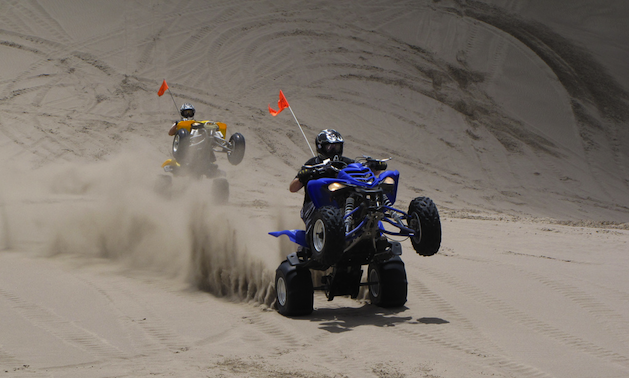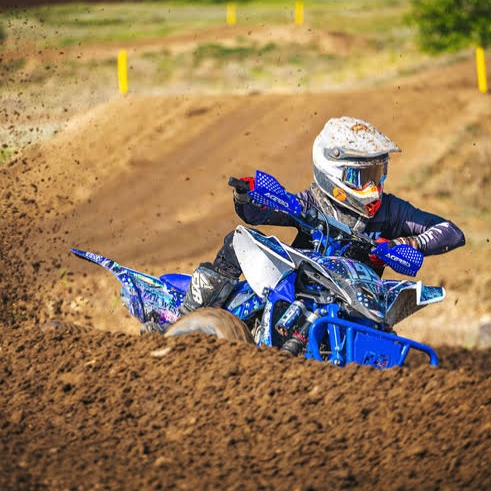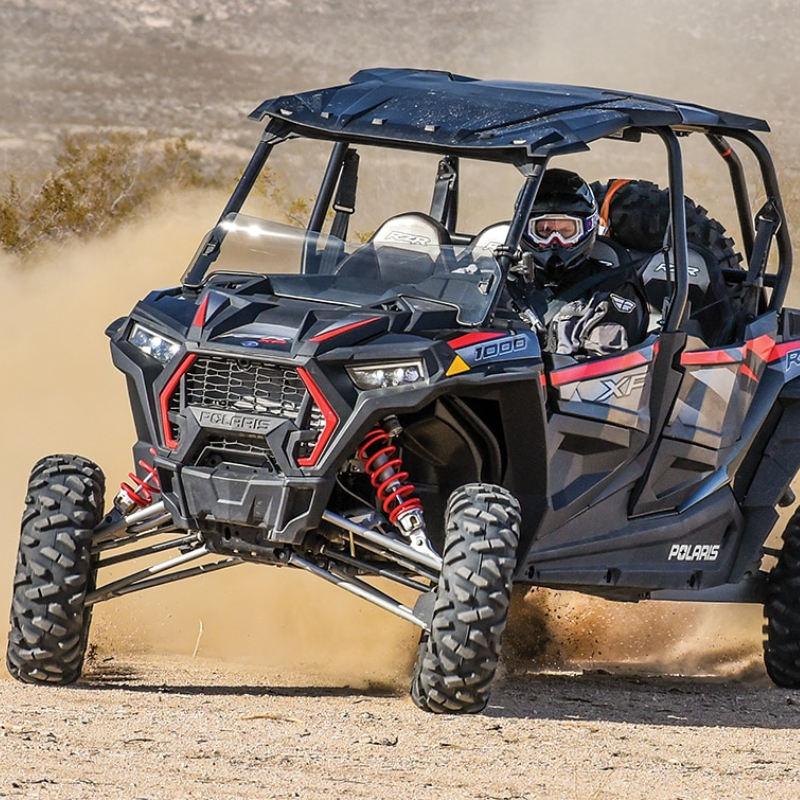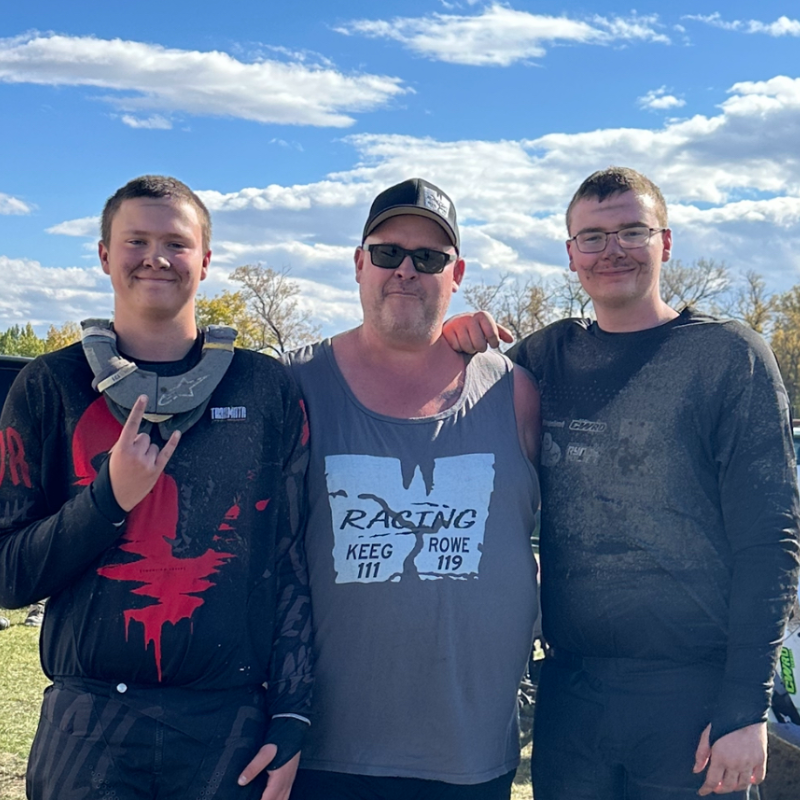After friends of his described the fun they had at the sand dunes near St. Anthony, Idaho, Doug Martens knew it was a place he would have to check out for himself. Now Martens and his friends look forward to a “guys’ trip” to the dunes every year.
“There’s a whole group of about 10 of us that regularly go,” said Martens. “We used to go twice a year, but now that our kids are older and life is just a whole lot busier, we usually can only go once each spring.”
The Saint Anthony Sand Dunes are a recreation area found in the eastern part of Idaho about 80 kilometres northwest of Idaho Falls,
Martens’ wife Melissa and three children have occasionally accompanied him on the annual trip, with many of the other guys’ wives and children in tow as well. But this particular fall, with duties at his farm in McMahon, Saskatchewan, making it impossible for him to attend the annual springtime trip with the rest of his friends, Martens made plans to head south with his 15-year-old son Kobe and a couple of other friends this past October.
“It’s beautiful there no matter what time of year you go,” said Martens. “For this trip we had 23 degrees Celsius, which is very similar to what it’s like in the spring.”
The plan
For Martens the journey to St. Anthony is a 1230-kilometre trek that takes just under 12 hours to drive. Leaving on a Wednesday, the group gets up nice and early and arrives in nearby Rexburg in time for a late supper. Up early the next morning for a good breakfast, they ride hard for the next two and a half days before packing up and heading home Saturday afternoon.
With over 10,600 acres of shifting sand, the dunes offer plenty of rolling hills and aggressive climbs.
“If you can imagine, it looks just like a desert. It’s just sand,” said Martens.“It’s for all ages and all level of riders. Anything you want to do, you can go out there and do.
“The sand changes with the wind all the time and makes different shapes and jumps. There’s this one area where the wind has blown a bowl in the middle of the sand, and if you go down into that bowl, unless you have a big machine, you can’t just climb out. You’d have to go around and around and around like a cyclone to get yourself out.”
Martens said you can go 75 miles an hour around this eighth-of-a-mile-wide bowl, but if you stop sideways you’d easily roll down. That’s how steep it is.
“The whole area is just kind of a rush. You can ride this bowl, where you’re looking straight down as you go around it, and then you can go on to the next area where there’s a super long jump that allows you to jump 75 feet in mid air and feel like you’re floating, and then you can drive just a little further and find a climb with 50 guys waiting at the bottom all trying to climb up this one hill. And then the competition is really on.”
With hills climbs as long as 700 feet, Martens said you’ll often not even have your front wheels on the ground as you ride up—doing a wheelie the entire way.
“There’s one hill that’s called Choke Cherry and very few quads can make that hill, so obviously it’s a guy thing where everyone will try racing and be the first to the top. But even making it is an accomplishment in and of itself.”
Yamaha man
As for what kind of machine he drives to make it up Choke Cherry, Martens is pretty clear where his loyalty lies.
“There is only one kind, and it’s Yamaha,” said Martens. “We’re pretty diehard and it runs pretty thick in our group, that’s pretty much all anyone runs.” Martens’ Yamaha of choice is a 700 Raptor, while his son Kobe’s is a YFC 450.
In view of the challenging conditions, Martens said he and his friends take no chances and gear up with all the safety equipment possible, even though it’s not a requirement of playing on the dunes. Even helmets are only mandatory for those under 18 years of age.
“Even with our experience we dress right up, the helmets, boots, the gloves, because there are lots of accidents out there and you have to be really careful,” said Martens. A few years ago Kobe suffered a concussion after an accident during a failed jump a few years back, despite the fact he was wearing his helmet.
The details
While there are three main campgrounds and RV resorts surrounding the dunes, Martens and his friends prefer to motel it and leave someone else to do the cooking.
“We usually grab sandwiches in Rexburg as we head out for the day,” said Martens. “Or else we grab food at the little store there where you can grab a hotdog or some chips. It’s nothing great, but it’s definitely guy food.”
When they take a break for lunch, Martens said, it’s also a great time to meet the many other recreational riders that flock to the Dunes. They sit around and talk machines while eating, before fueling up and heading back out for the afternoon.
How much longer will he continue his annual trek?
“We’re not getting any younger here,” said Martens. “But we’ll definitely do it for as long as we can.”
Dunes rules
The St. Anthony Sand Dunes are a recreational area open to riders of all ages and skill levels, but there still are a few rules in place to ensure that the site is enjoyable for all:
- Out of state ATV, OHV, ORV and motorcycle users must have a valid registration sticker for the state in which they reside, if the state requires such a registration. If your state requires a sticker and you do not have one, you may be cited in Idaho for failure to register your vehicle.
- All off-road vehicle use must occur on the open sand areas or on roads and trails displaying a Designated Route sign. ORV use is prohibited on roads and trails that do not display a Designated Route sign. Specifically, no designated routes exist in the vicinity of the Egin Lakes access. Riders should follow the dunes access route to the open sand and avoid all vegetated areas.
- No highway-licensed vehicles are allowed on the sand dunes.
- Portions of the Sand Mountain Wilderness Study Area are affected by a seasonal closure for all forms of human entry from January 1 to April 1 and/or January 1 to May 1 of each year.
- All OHVs shall be equipped with an eight-foot above level ground (minimum) whip mast with a six-by-12-inch red or orange flag. The flag should be at least eight feet above level ground.








Comments